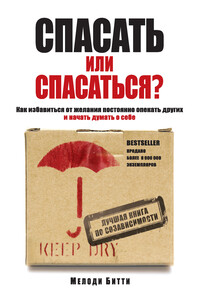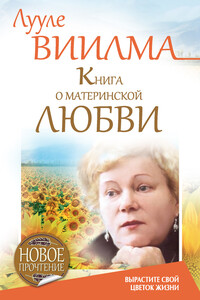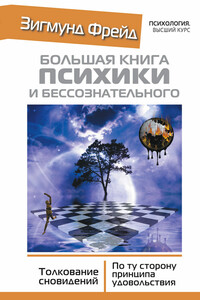2. Thomas W. Sadler, Langman’s Medical Embryology, 9th ed. (Baltimore: Lippincott Williams & Wilkins, 2009), 13.
3. Finch and Loehlin, “Environmental Influences That May Precede Fertilization,”101-2.
4. Tracy Bale, “Epigenetic and Transgenerational Reprogramming of Brain Development,” Nature Reviews Neuroscience, 16 (2015): 332–44; doi:10.1038/ nrn3818.
5. Bruce H. Lipton, “Maternal Emotions and Human Development,” Birth Psychology, https://birthpsychology.com/free-article/maternal-emotions-and-human-development.
6. Bruce H. Lipton, PhD, The Wisdom of Your Cells: How Your Beliefs Control Your Biology (Louisville, CO: Sounds True, Inc., 2006), audiobook, Part 3.
7. Ibid.
8. K. Bergman, et al., “Maternal Prenatal Cortisol and Infant Cognitive Development: Moderation by Infant-Mother Attachment,” Biological Psychiatry 67(11) (June 2010): 1026–32, doi:10.1016/ j.biopsych.2010.01.002, Epub February 25, 2010.
9. Thomas Verny, MD, and Pamela Weintraub, Nurturing the Unborn Child: A Nine-Month Program for Soothing, Stimulating, and Communicating with Your Baby (e-book) (New York: Open Road Media, 2014), in the chapter “Why the Program Works.”
10. Ibid.
11. Lipton, “Maternal Emotions and Human Development.”
12. Ibid.
13. “Definition of Epigenetics,” MedicineNet.com, www.medterms.com/script/main/art.asp?articlekey=26386.
14. Alice Park, “Junk DNA – Not So Useless After All,” Time, September 6, 2012, http://healthland.time.com/2012/09/06/junk-dna-not-so-useless-after-all/.
15. Danny Vendramini, “Noncoding DNA and the Teem Theory of Inheritance, Emotions and Innate Behavior,” Medical Hypotheses 64 (2005): 512–19, esp.p.513, doi:10.1016/ j.mehy.2004.08.022.
16. Park, “Junk DNA – Not So Useless After All.”
17. Michael K. Skinner, “Environmental Stress and Epigenetic Transgenerational Inheritance,” BMC Medicine 12(153) (2014): 1–5, esp.pp. 1, 3, www.biomedcentral.com/1741-7015/12/153.
18. Vendramini, “Noncoding DNA and the Teem Theory of Inheritance, Emotions and Innate Behavior,” 513.
19. Danny Vendramini, “Paper 5 of 5: The Teem Theory of NonMendelian Inheritance,” 23,25, www.thesecondevolution.com/paper5dna.pdf.
20. Tori Rodriguez, “Descendants of Holocaust Survivors Have Altered Stress Hormones,” Scientific American Mind 26(2) (February 12, 2015), www.scientificamerican.com/article/descendants-of-holocaust-survivors-have-altered-stress-hormones.
21. Alisha Rouse, “Holocaust Survivors Pass the Genetic Damage of Their Trauma onto Their Children, Researchers Find,” The Daily Mail, August 21, 2015, www.dailymail.co.uk/sciencetech/article-3206702/Holocaust-survivors-pass-genetic-damage-trauma-children-researchers-find.html.
22. C. N. Hales and D. J. Barker, “The Thrifty Phenotype Hypothesis,” British Medical Bulletin 60 (2001): 5–20.
23. Bale, “Epigenetic and Transgenerational Reprogramming of Brain Development.”
24. David Samuels, “Do Jews Carry Trauma in Our Genes? A Conversation with Rachel Yehuda,” Tablet Magazine, December 11, 2014, http://tabletmag.com/jewish-arts-and-culture/books/187555/trauma-genes-q-a-rachel-yehuda.
25. Patrick McGowan, et al., “The Legacy of Child Abuse,” Headway 4(1) (2009), McGill University.
26. Jamie Hackett, “Scientists Discover How Epigenetic Information Could Be Inherited,” Research, University of Cambridge, January 25, 2013, www.cam.ac.uk/research/news/scientists-discover-how-epigenetic-information-could-be-inherited.
27. Ibid.
28. Brian G. Dias and Kerry J. Ressler, “Parental Olfactory Experience Influences Behavior and Neural Structure in Subsequent Generations,” Nature Neuroscience 17 (2014): 89–96, doi:10.1038/nn.3594, www.nature.com/neuro/journal/v17/n1/abs/nn.3594.html.
29. Hackett, “Scientists Discover How Epigenetic Information Could Be Inherited.”
30. Katharina Gapp, et al., “Implication of Sperm RNAs in Transgenerational Inheritance of the Effects of Early Trauma in Mice,” Nature Neuroscience 17 (2014): 667–69, doi:10.1038/ nn.3695.
31. Richard L. Hauger, et al., “Corticotropin Releasing Factor (CRF) Receptor Signaling in the Central Nervous System: New Molecular Targets,” CNS Neurological Disorder Drug Targets 5(4) (August 2006): 453–79.






